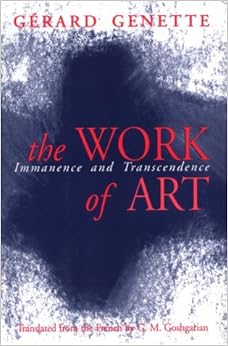Teaching Mr. Penumbra’s 24-Hour Bookstore [#tbt]
Throwback Thursday blog post: I wrote this two years ago for a now defunct personal blog. I thought about Mr. Penumbra’s 24-Hour Bookstore frequently while reading Dave Eggers’s The Circle, which was VCU’s summer reading selection for 2014. I thought my colleagues in Focused Inquiry and their students would be interested in this novel of ideas that also considers the consequences of rapidly changing technologies.

To an extent, Mr. Penumbra is a novel of ideas, but the kind that I wanted to keep reading to see what would happen next. I was reminded of the humorous books of that type by Aldous Huxley (especially Chrome Yellow, which I’ve also taught). Huxley also excels at exploring the intersection of the aesthetic with the ethical.
The New York Times‘s review of Sloan’s novel is right to point out that the plot moves along swiftly thanks to some implausibly simple resolutions to problems that stand in the characters’ way. I think that’s beside the point, though. I believe Sloan offers up convenient and fast solutions made possible by new technology in order to show the limitations of such breakthroughs, more obvious in retrospect. Unfortunately, the novel itself doesn’t encourage readers to circle back to some of these moments and examine them more closely. Or maybe it’s a good thing that Sloan hesitates to offer direct cultural commentary, which risks making his fiction seem didactic. The book is all the more readable for it, and fun.
But class discussion could dwell on the ethical questions that are left unanswered. I identified two issues that could be readily explored via Mr. Penumbra. (I’ll try to avoid dropping any spoilers!)
1. The Work of Data Processing: There are three moments when the main character Clay and his friends engage in swift data crunching. In the first, Clay’s love interest Kat uses Hadoop, a distributed computing system where users volunteer their spare processing power. The second requires actual manpower: the Mechanical Turk, which “instead of sending jobs to computers, like Hadoop, it sends jobs to real people. Lots of them. Mostly Estonians” (120). Clay describes Hadoop and the Mechanical Turk as armies on the march, a loaded metaphor certainly. Any allusion to outsourcing and its ills are glossed over, however. The last data crunch is performed at Google, whose corporate structure allows for these ventures, hyped as experts at work.
It is clear that collaboration is required to pull off these feats, despite the fantastic technology, and these plights may be easily contrasted with the individual quests that punctuate the novel. Compared to the analog methodologies that require careful investment of energy, one character (the corporate villain) believes that by simply processing data researchers “don’t take the work seriously” (152). Penumbra himself is at first ambivalent about computer models, telling Clay when he cracks a code, “You cheated—would that be fair to say? And as a result, you have no idea what you have accomplished. … And yet … you did it all the same” (97). And moreover, maybe that’s the point: with new technologies, we may not know what we are able to produce until we actually set them in motion.
2. Intellectual Property: In order to scan a book vital to Clay’s project, his team must create a convincing fake volume to put on the shelf in its place. It requires that he pirate a font, since he refuses to pay the exorbitant licensing fee: “TLC Type Foundry is probably somehow a subsidiary of Time Warner. Gerritszoon is an old font, its eponymous creator long dead. What does he care how his typeface is used, and by whom?” (79). In Sloan’s fictional world, the font is similar to a default typeface on a number of devices, including the iPhone. Clay’s irritation may be partly due to the fact that he can’t rely on the almost good enough version to replicate the book cover; he knows better. (Any typeface will do for data crunching.)
Later Clay finds out that he does have a connection to TLC Type Foundry. In fact, his “salary is paid by font licensing fees and copyright infringement cases” (142). This arrangement is all the more strange considering that the company uses the moveable type for printing while licensing a digital copy, and worries that it will break all its exemplars because the original punches were stolen. How does TLC own a font, exactly? Is it really eponymous?
There are plenty of other topics that the novel brings to light. Most, like these examples, run through the entire book, so a discussion can compare situations at various points.
Sometimes even very straightforward narratives can contain a remarkably dense set of thematic connections, and I would regard Mr. Penumbra’s 24-Hour Bookstore as one of them.

No comments yet.
Add your comment